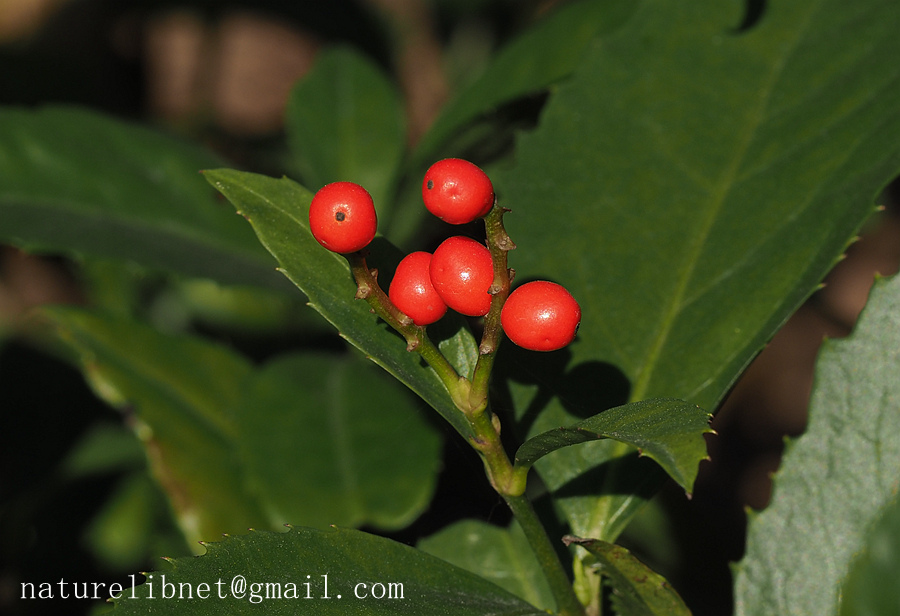草珊瑚 Sarcandra glabra
- Scientific Name: Sarcandra glabra (Thunb.) Nakai
- Ref: Fl. Sylv. Kor. 18:17. 1930
- Synonyms: Ardisia glabra (Thunb.) A.DC.; Bladhia glabra Thunb.; Chloranthus denticulatus Cordem.; C. esquirolii H.Lév.; C. glaber (Thunb.) Makino; C. monander R.Br.; C. monostachyus R.Br.; C. pernyanus Solms
- English Common Name: herba sarcandrae, glabrous sarcandra herb
- Chinese Common Name: 草珊瑚 cǎo∙shānhú, 接骨金粟兰 jiēgǔ jīnsù∙lán
- Japanese Common Name: センリョウ [千両/仙蓼] senryō
- Family: Chloranthaceae
- Genus: Sarcandra
- Distribution: Forests, thickets, valleys, ravines, slopes, roadsides, trailsides, grasslands, swamps, streamsides, sandy soil; near sea level to 2000 m. Anhui, Fujian, Guangdong, Guangxi, Guizhou, Hainan, Hubei, Hunan, Jiangxi, Sichuan, Taiwan, Yunnan, Zhejiang [Cambodia, India, Japan (including Ryukyu Islands), Korea, Laos, Malaysia, Philippines, Sri Lanka, N Thailand, Vietnam]
- Photo: 06/11/2019, Hangzhou Botanical Garden, Zhejiang
Subshrubs, evergreen, 50-150 cm tall. Stems cylindric, erect, glabrous, nodes swollen. Stipules subulate; petioles 0.5-2 cm; leaf blade elliptic or ovate to ovate-lanceolate, or broadly elliptic to oblong, 6-20 × 2-8 cm, leathery or papery, glandular mucronate on marginal teeth, glabrous, base acute, cuneate, or broadly cuneate, margin sharply coarsely-serrate or dully serrate except basally, apex acute to acuminate; lateral veins 5-7, slightly prominent on both surfaces. Inflorescences terminal, usually branched, ± in spikes, 1.5-4 cm with peduncles; bracts triangular or ovate. Flowers yellowish green. Stamen 1, fleshy, baculate to terete or ovoid; anther 2-loculed, thecae lateral or sometimes introrse, on both sides of apical part of connective or nearly as long as connective. Ovary globose or ovoid; style absent; stigma subcapitate or minutely spotted. Drupes green when young, shiny red or yellowish red at maturity, globose (3-4 mm in diam.) or ovoid (ca. 4 mm). 2n = 30*. (Flora of China)

2009.06.21@SCBG

2019.06.11@HZBG
